Aldec
-
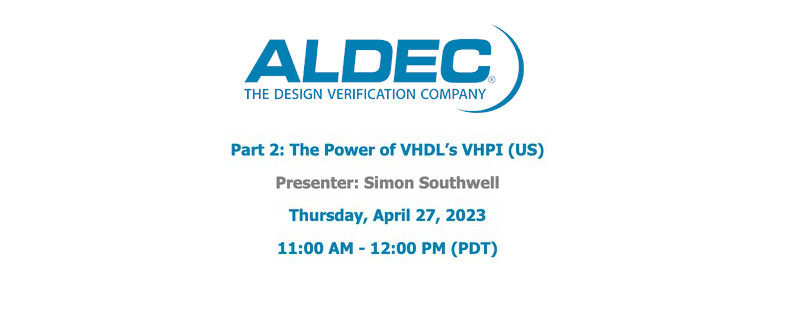
The Power of VHDL’s VHPI
The programming interfaces of logic simulators are largely the domain of specialists writing proprietary tools and extensions and are only vaguely in the consciousness of many design and verification engineers, if aware at all. Yet the simplest use of such interfaces opens up a whole world of possibilities in extending what is achievable in verifying… The Power of VHDL’s VHPI
-
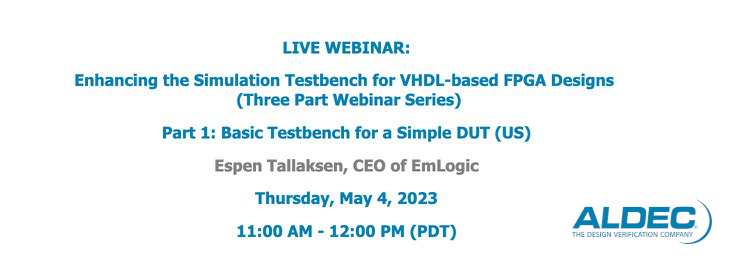
Basic Testbench for a Simple DUT
Presenter: Espen Tallaksen, CEO of EmLogic Abstract Part 1: Functional simulation using an HDL testbench is the de facto method for proving functional correctness of FPGA designs. In this three-part webinar series we will present a step-by-step approach on how to architect a testbench - progressing from basic to advanced techniques. We will first use… Basic Testbench for a Simple DUT
-
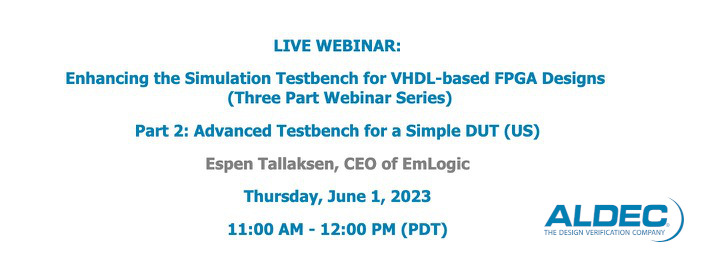
Advanced Testbench for a Simple DUT
Abstract: Functional simulation using an HDL testbench is the de facto method for proving functional correctness of FPGA designs. In this three-part webinar series, we will present a step-by-step approach on how to architect a testbench - progressing from basic to advanced techniques. We will first use a simple DUT then go to a more… Advanced Testbench for a Simple DUT
-
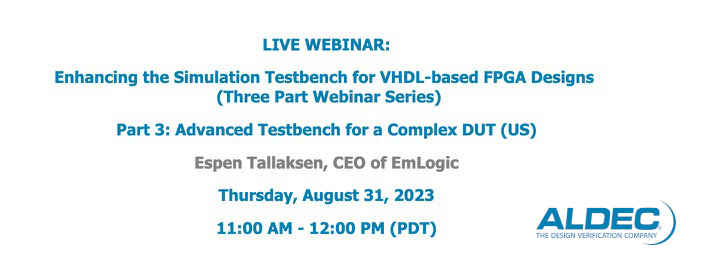
Advanced Testbench for a Complex DUT
Abstract: Functional simulation using an HDL testbench is the de facto method for proving functional correctness of FPGA designs. In this three-part webinar series, we will present a step-by-step approach on how to architect a testbench – progressing from basic to advanced techniques. We will first use a simple DUT then go to a more… Advanced Testbench for a Complex DUT
-

Advanced Testbench for a Complex DUT
Functional simulation using an HDL testbench is the de facto method for proving functional correctness of FPGA designs. In this three-part webinar series, we will present a step-by-step approach on how to architect a testbench – progressing from basic to advanced techniques. We will first use a simple DUT then go to a more complex… Advanced Testbench for a Complex DUT
-
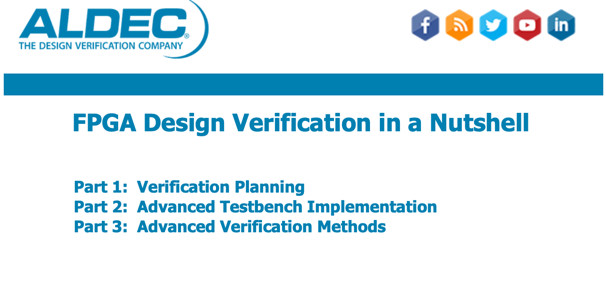
FPGA Design Verification – Planning
As FPGA technology continues to evolve - to provide us with full-blown SoCs with CPU, GPU, and high-speed peripherals, for example, joining the traditional programmable logic area - design verification becomes increasingly challenging. Lab-based FPGA testing and bring-up alone are clearly insufficient, especially for safety-critical designs, and FPGA teams are adopting advanced design verification methodologies… FPGA Design Verification – Planning
-

FPGA Design Verification – Advanced Testbench Implementation
Abstract As FPGA technology continues to evolve - to provide us with full-blown SoCs with CPU, GPU, and high-speed peripherals, for example, joining the traditional programmable logic area - design verification becomes increasingly challenging. Lab-based FPGA testing and bring-up alone are clearly insufficient, especially for safety-critical designs, and FPGA teams are adopting advanced design verification… FPGA Design Verification – Advanced Testbench Implementation
-

FPGA Design Verification – Advanced Methods
Abstract As FPGA technology continues to evolve - to provide us with full-blown SoCs with CPU, GPU, and high-speed peripherals, for example, joining the traditional programmable logic area - design verification becomes increasingly challenging. Lab-based FPGA testing and bring-up alone are clearly insufficient, especially for safety-critical designs, and FPGA teams are adopting advanced design verification… FPGA Design Verification – Advanced Methods
-
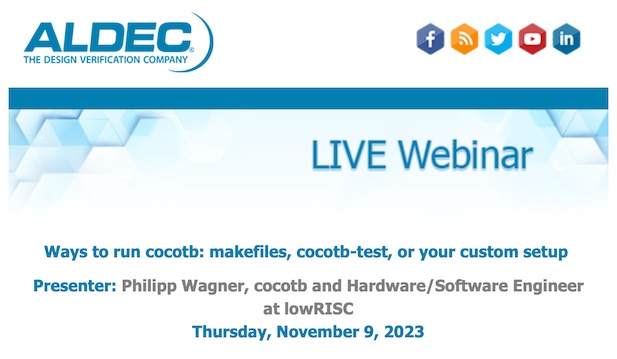
Ways to run cocotb: makefiles, cocotb-test, or your custom setup
cocotb enables Python-based hardware verification, and it integrates into your simulator of choice, such as Aldec's Riviera-PRO and executes Python testbenches in that context. In this webinar, we will look at ways to invoke your simulator of choice in a way that also starts with cocotb. We will show ways to extend the setup to… Ways to run cocotb: makefiles, cocotb-test, or your custom setup
-
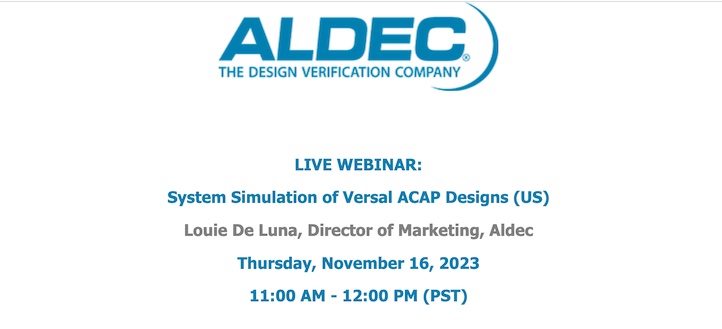
System Simulation of Versal ACAP Designs
AVersal ACAP, developed by Xilinx/AMD, is a groundbreaking adaptable platform composed of AI Engine (AIE), Processing System (PS), Programmable Logic (PL), Network on Chip (NoC) and a wide range of hardened domain-specific IPs. Versal ACAP enables the efficient execution of complex algorithms and accelerates workloads, including machine learning, embedded computing, and high-performance computing. In this… System Simulation of Versal ACAP Designs
-

Verifying AXI Interconnects with ALINT-PRO and Riviera-PRO
AXI has become the most popular internal bus protocol with today’s FPGA and SoC FPGA designs. ALINT-PRO enables FPGA designers to extract, review and statically verify AXI bus interfaces. In addition, ALINT-PRO can assist with automatic generation of test harnesses for dynamic verification. For dynamic verification of AXI interconnects, Aldec provides FPGA vendor-agnostic AXI Bus… Verifying AXI Interconnects with ALINT-PRO and Riviera-PRO
-

Essential Steps to Simplify VHDL Testbenches Using OSVVM
This “Getting Started” webinar focuses on the first, essential steps you need to take when looking to improve your VHDL testbench approach. In this webinar we examine transaction-based testing, self-checking tests, messaging, reports, and Open Source VHDL Verification Methodology (OSVVM) helper utilities. The “transaction” in transaction-based testing is just a fancy word for an… Essential Steps to Simplify VHDL Testbenches Using OSVVM